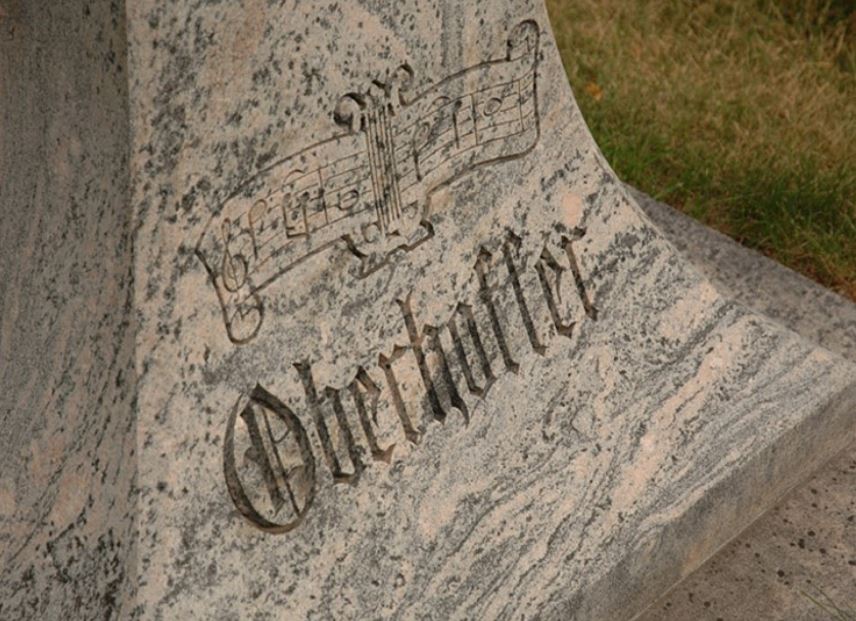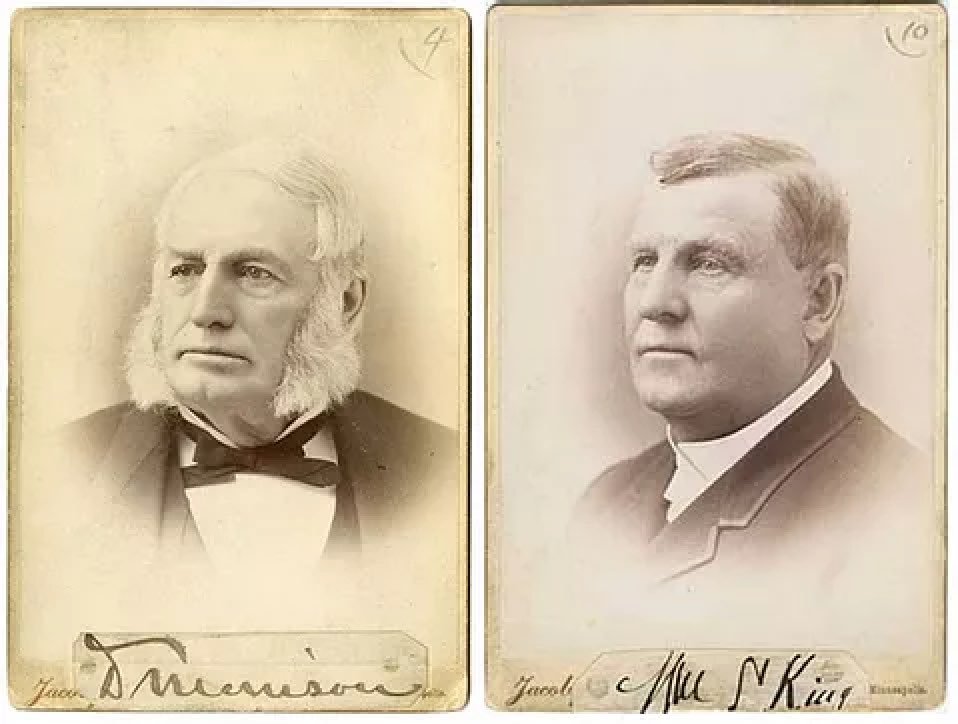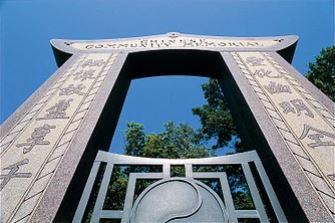Since our founding, Lakewood Cemetery has served as the final resting place for many of Minnesota’s social and political leaders. Of the 40 governors that have served Minnesota since we became a state in 1858, 7 governors are buried at Lakewood. These governors are: John S. Pillsbury (1876-1882), John Lind (1899-1901), Adolph O. Eberhart (1909-1915), Joseph Alfred A. Burnquist (1915-1921), Floyd B. Olson (1931-1936), Orville L. Freeman (1955-1961), and Rudy Perpich (1976-1979, 1983-1991). Read on to learn more about each of the governors buried at Lakewood!
Governor John S. Pillsbury, 1876-1882
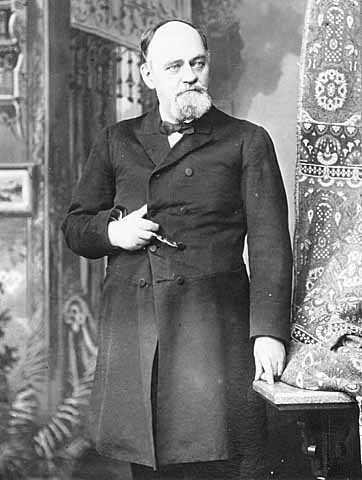
John S. Pillsbury was the 8th Governor of Minnesota. Born in 1827 in New Hampshire, Pillsbury moved to the growing frontier town of St. Anthony (now Northeast Minneapolis) in 1855. An entrepreneur, he opened a small hardware store in the burgeoning town. He tried his hand in multiple industries, and ultimately made a fortune—and a name for himself—as the co-founder of Pillsbury flour milling company.
MXLLS
Within five years of arriving in Minnesota, Pillsbury became very active in local politics. He served as a St. Anthony alderman. He also attended the University of Minnesota. His love for this institution was strong; after the University of Minnesota closed during the Civil War, Pillsbury used his political influence and his personal funds to re-open the university. He worked with the state legislature to ensure the University of Minnesota became our state’s land-grant university. He is often called the “Father of the University,” and Pillsbury Hall is named in his honor.
Times were tough in Minnesota when Pillsbury was elected Governor in 1875. Much of the state’s population was farmers, and crop-killing grasshoppers had plagued much of the state since 1873, resulting in famine and poverty on the frontier. Despite his opposition to state-funded relief for farmers (he instead mandated a bounty on grasshopper eggs, in which all able-bodied men had to destroy eggs for one day out of each week, for five weeks in a row), he was elected to the statewide position. In April of 1877 he called for a statewide day of prayer to end the grasshopper plagues. The next day, a freak snowstorm rolled through the state and killed nearly all of the eggs, effectively ending the plague.
Governor John S. Pillsbury is buried with many other members of the Pillsbury family beneath a large obelisk in Lakewood’s oldest section (Section 2). There is a sheaf of wheat engraved on this obelisk. In memorial symbolism, wheat represents a long and fruitful life. On this monument, the wheat has a second meaning—it celebrates the raw material from which the family made their fortune.
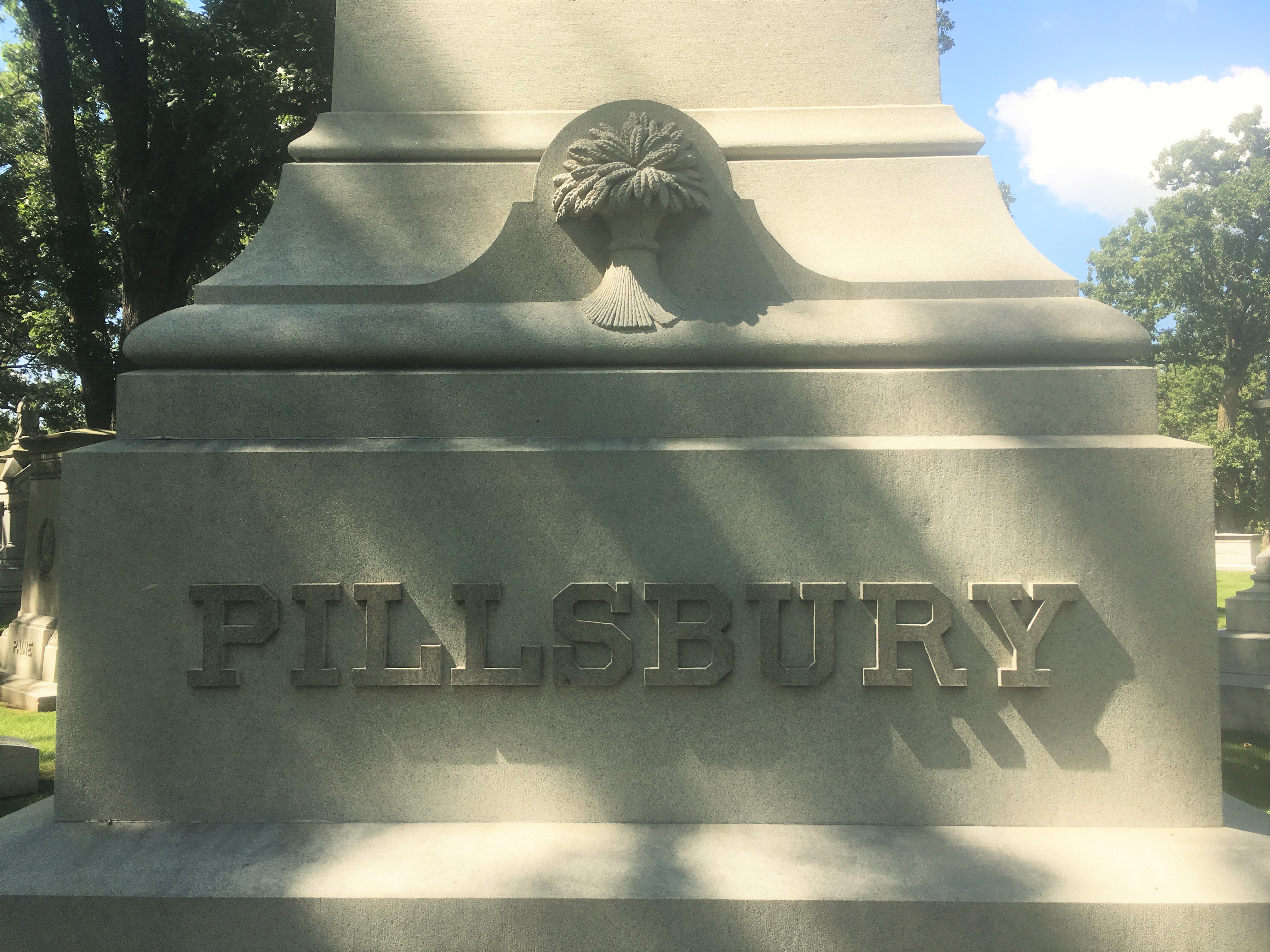
A sheaf of wheat on the Pillsbury family monument at Lakewood Cemetery.
John Lind (1899-1901)
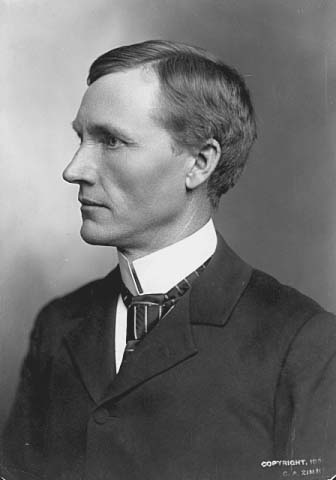
Swedish-American John Lind was the 14th Governor of Minnesota. Born in Sweden in 1854, Lind nurtured his intellect after losing his hand in a hunting accident at a young age. When Lind was 13, he and his family moved to Minnesota, where he went on to attend the U of M Law School.
After graduating from Law School, Lind settled in New Ulm. The primary language in New Ulm at that time was German. Lind, who was fluent in both English and Swedish, adapted to his new home by learning and mastering the German language. He practiced law in New Ulm before serving in the Spanish-American War in 1898. He was elected to the Minnesota House of Representatives twice before being elected governor in 1899. While in office, he advocated vocally against monopolies and assisted with bridge and infrastructure development in the northwest.
In 1913, after concluding his service as governor, John Lind served as Woodrow Wilson’s personal envoy for Mexican Affairs during the Mexican Revolution. Lind returned home to Minnesota after this position, and died in Minneapolis in 1930. He is buried in Section 10, along with many other early Minnesotan Swedish-American leaders.
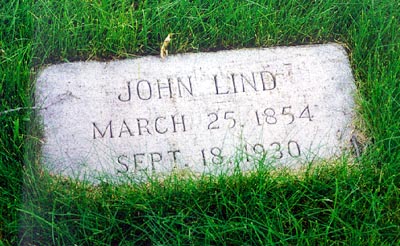
The grave of Governor John Lind at Lakewood. Source: Find A Grave
Adolph O. Eberhart (1909-1915)
Swedish-American Adolph O. Eberhart was the 17th Governor of Minnesota. Born to a farming family in Sweden in 1870, his parents emigrated to the U.S. in 1881 when they fell on hard times. They could not afford to bring Adolph with them, so they left him with his aunt and uncle in Sweden. A year later, Adolph was able to join his parents—whom he missed very much—in Minnesota.
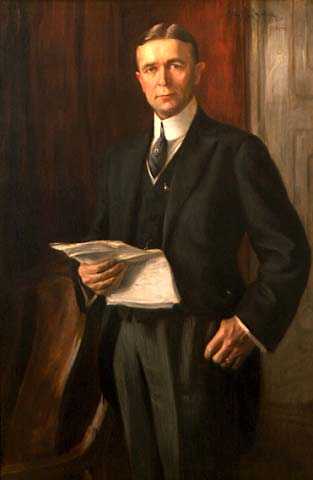
A year after Adolph arrive in the U.S., the family moved to Nebraska. Here Eberhard worked on the farm. He had a fourth grade education level when he returned to Minnesota at age 21 to attend Gustavus Adolphus college. Despite his lack of formal education, Eberhart completed high school and college classes in just four years, and graduated at the top of his class. It was while attending Gustavus Adolphus that Eberhart, eager to differentiate himself from the other Olsons on campus, gave himself the last name “Eberhart.”
After graduating in 1895, Eberhart moved to Mankato the practice law. He quickly became involved in local politics, and by age 32 was elected to the Minnesota State Senate. A noted progressive, his primary reason for getting involved in politics was to improve rural public schools. In 1909, then Governor John A. Johnson died, leaving then Lieutenant Governor Lind to take office. Lind finished out this term, and was elected to two more terms. While in office Lind helped pass measures to create larger, more established public schools in rural areas. He also enacted the use of direct primaries in the election of officials. After serving as governor Eberhart retired from political life and worked in real estate. He died in 1944 and is buried in Section 5.
Joseph Alfred A. Burnquist (1915-1921)
When Governor Joseph Alfred A. Burnquist took office in 1915, most Americans weren’t paying much attention to the mounting war in Europe. Midwesterners in particular—with their heavy interest in farming and milling—were often more interested in domestic policy than foreign policy. But by 1917, Governor Burnquist’s primary political task was to rally support for WWI among Minnesotans, and to shape Minnesota’s role in the war effort.
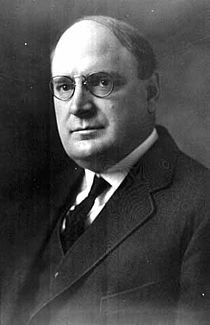
Born in Iowa in 1879, Burnquist received a law degree from University of Minnesota in 1905, and became governor in 1915 after the death of then-Governor Winfield Scott Hammond. Among his accomplishments was creating the Public Safety Commission in 1917, which sought to gain support for the US’s 1917 entrance into the War. Nearly all of Minnesota’s industrial and social efforts—philanthropy, investment (via war bonds), milling, etc.—were directed to the war effort during this time. In addition to shaping Minnesota’s involvement in WWI, Burnquist also passed measures to improve highways and advocate for children’s welfare.
After serving as governor, Burnquist returned to his practice of law. Later in life, he reentered politics as the state’s second-longest serving Attorney General. He passed away in Minneapolis in 1961, and is buried in Lakewood’s Section 27.
Floyd B. Olson (1931-1936)
Minnesota’s first Farmer-Laborer party governor and hero of Depression-era progressives, Floyd B. Olson, was born in 1891 to working class Scandinavian immigrants in a predominately Jewish and African American North Minneapolis neighborhood. Growing up, Floyd learned firsthand the struggles of the early 20th century urban poor. After years of working and schooling, Olson became Hennepin County Attorney. He received both praise and death threats for taking a firm stance against burgeoning Klan activity and exposing many Klan members. In 1930 Floyd was elected the 22nd Governor of Minnesota. He called for the state’s first graduated income tax and greater state aid to Minnesotans.
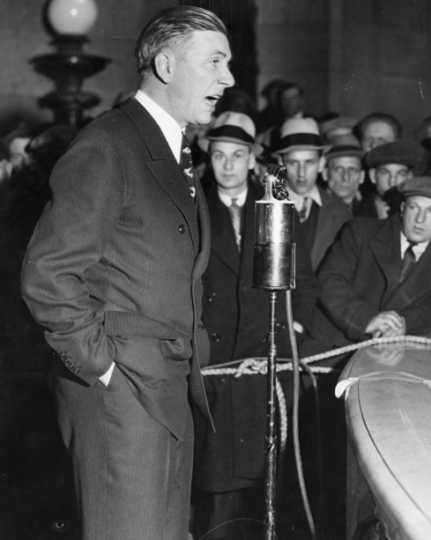
Olson is considered one of Minnesota history’s most complex characters. His progressiveness, his roots in Minneapolis’s urban center, and his refusal to assimilate to elite political culture made him dubious to many in the state’s high society. Many accused Olson of having ties to an underground and illicit economy, particularly during prohibition. These accusations led Olson to oppose a free press, adding complexity to his otherwise progressive politics and earning him the scorn of many Minnesotans.
But by 1933, unemployment and foreclosure was so rampant that the state proved fertile ground for the progressivism of Governor Olson, now in his second term. The economic context combined with Olson’s masterful coalition-building and prowess in public speaking earned him widespread support. By the end of his time as governor Olson had ratified the state’s first income tax, applied taxes on chain stores, forgiven school districts’ debts, slowed farm foreclosures, created state-run liquor stores, mandated the implementation of a federal law against child labor, applied a 54-hour maximum work week for women in industrial jobs, and created 13 state forests.
Floyd B. Olson died of stomach cancer at age 44 while serving his third term as governor. One newspaper reported that one million Minnesotans flooded the streets of Downtown Minneapolis on the day of his funeral at the Minneapolis Auditorium. 30,000 mourners arrived at Lakewood’s Section 18 for the burial of the people’s politician, the powerful orator, the leader who many considered to be a presidential hopeful.
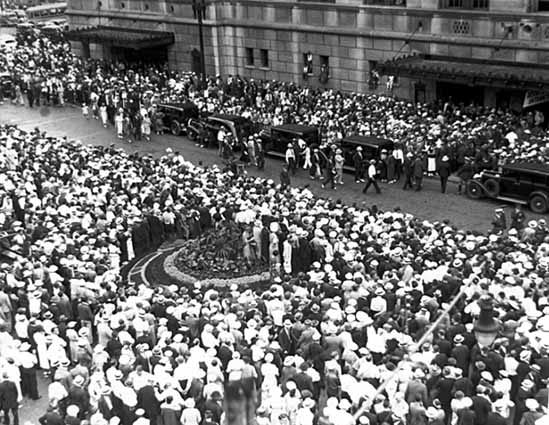
The crowd outside the Minneapolis Convention Center for Governor Floyd B. Olson’s funeral.Source: Minnesota Historical Society
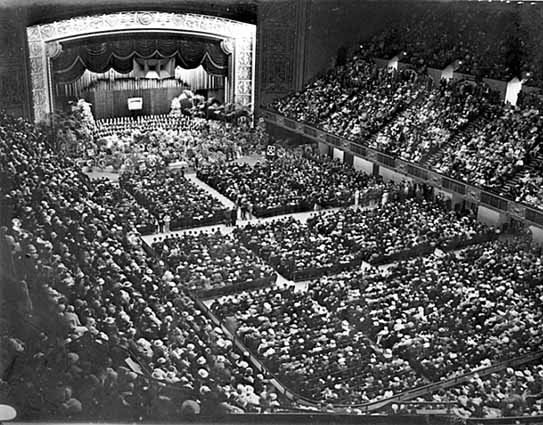
The crowd inside the Minneapolis Convention Center for Governor Floyd B. Olson’s funeral.
Source: Minnesota Historical Society
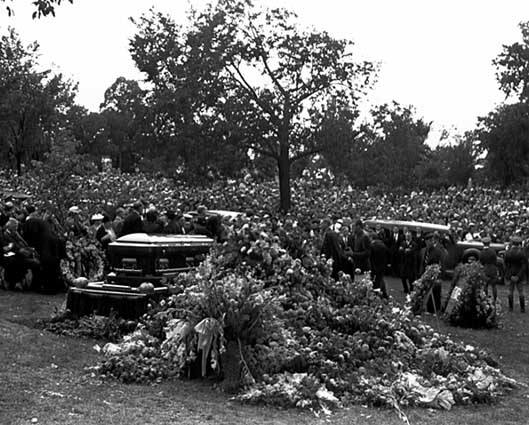
Governor Floyd B. Olson’s graveside service at Lakewood Cemetery. The service drew 30,000 people to the cemetery. Source: Minnesota Historical Society
Orville L. Freeman (1955-1961)
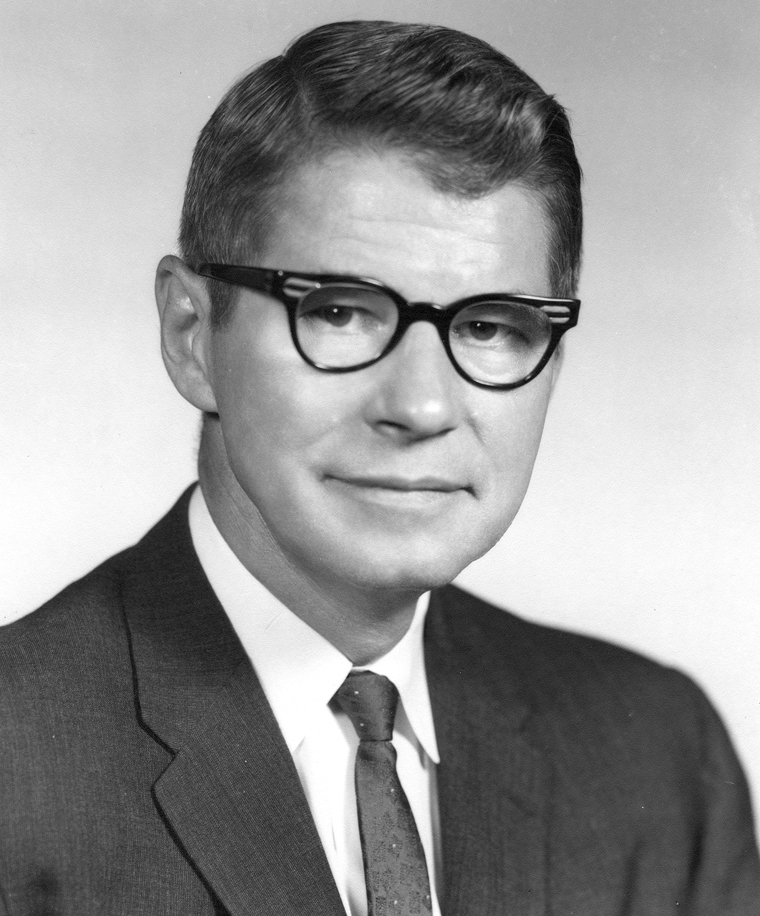
Born in 1918, Minneapolis’s own Orville Freeman was the 29th Governor of Minnesota, as well as the Secretary of Agriculture under presidents John F. Kennedy and Lyndon B. Johnson. A lifelong friend of Hubert H. Humphrey, Freeman was one of the co-founders of the state’s Democratic-Farmer-Labor party, which merged the previously distinct Farmer-Labor and Democratic parties in the 1940s.
Before being elected governor, Freeman studied law at the University of Minnesota. He took a break from his education to serve in the Marines during WWII, where he was injured in battle.
The progressive Freeman was elected to serve three terms as the governor of Minnesota. His accomplishments—and in particular his vocal opposition of religious discrimination—earned him national prominence, and this city boy was appointed Secretary of Agriculture by President Kennedy. In this position he helped implement school breakfast programs and a food stamp program.
After retiring from politics, Freeman practiced law in Washington D.C. He passed away in Minneapolis in 2003, and is buried in Section 30.
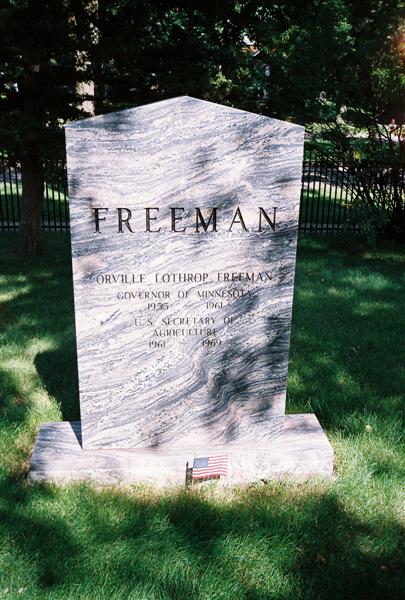
The grave of Orville Freeman at Lakewood Cemetery.
Rudy Perpich (1976-1979, 1983-1991)
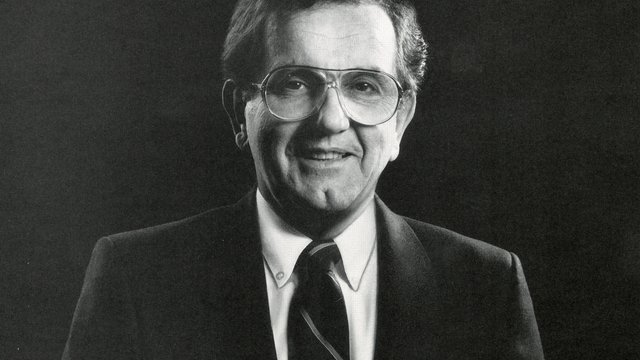
Rudy Perpich was the longest-serving governor in the state of Minnesota. He was born in 1928 to Croatian-American miners outside of Hibbing. He spoke no English when he entered school as a child. After graduating from high school he served in the US Army for two years. He then attended dental school at Marquette University in Milwaukee, and returned to Hibbing to practice dentistry.
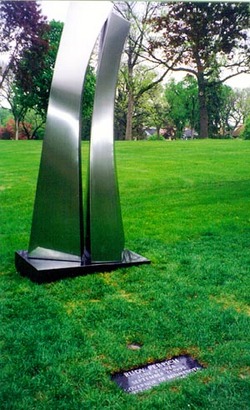
Shortly after his return to Hibbing, Perpich got involved in local politics by serving on the school board. During his service, the board implemented equal pay for men and women. Perpich was elected to the Minnesota Senate in 1962, and in 1970 was elected lieutenant governor of Minnesota. He was made governor for two years in 1976 when then-governor Anderson resigned. Perpich lost reelection in 1978, but he was elected in 1982 and 1986, making him the longest serving governor in the state. While in office Perpich laid the groundwork for the Mall of America, brought the Super Bowl to Minneapolis, and appointed more women to political and judicial positions than any governor previous. He is also Minnesota’s only Roman Catholic governor.
Rudy Perpich’s unique memorial monument is one of the most beloved graves at Lakewood. The sculpture at his grave depicts two stainless steel towers supporting one another. This sculpture was created by local artist Gloria Tew and commissioned by Perpich’s wife Lola. It represents the partnership of Perpich and his wife, as they were always a team in life.
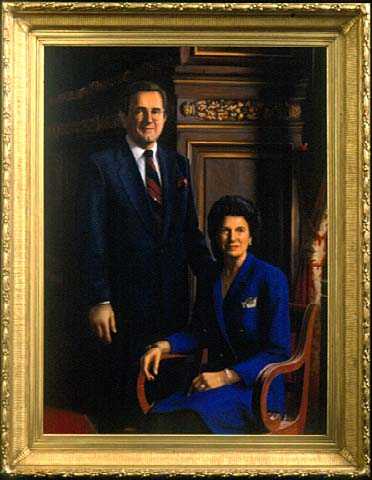
Photo sources:
Governor John S. Pillsbury. Source: Minnesota Historical Society
Governor John Lind. Source: Wikimedia
Governor Adolph O. Eberhart. Source: Wikimedia
Governor J. A. A. Burnquist. Source: Wikimedia
Governor Floyd B. Olson. Source: Minnesota Historical Society
Governor Orville Freeman. Source: Wikimedia
Governor Rudy Perpich. Source: Minnesota Discovery Center
Perpich’s monument. Source: Find A Grave
Rudy Perpich’s gubernatorial portrait, featuring his wife, Lola. Source: Minnesota Historical Society
